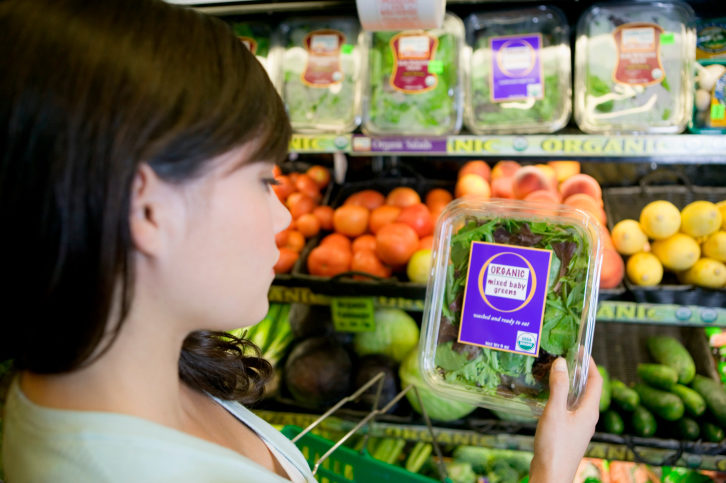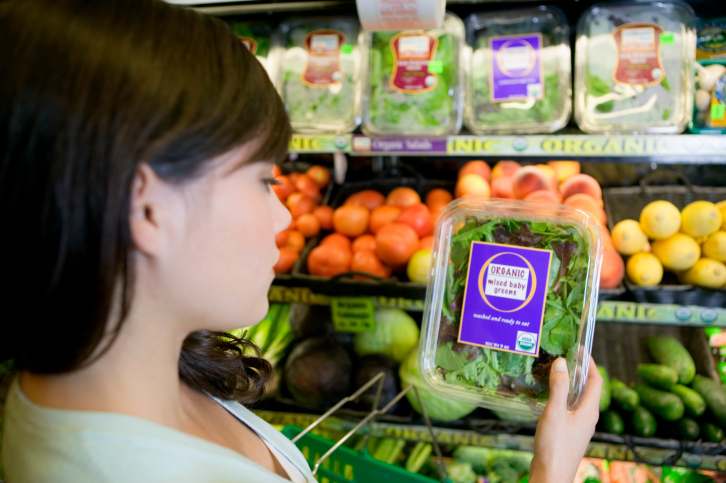
WholeFoods Magazine
Protecting the Organic Standard

The National Organic Standards Board (NOSB) is a federal advisory board made up of qualified volunteers from the organic community. Members include manufacturers, processors, farmers, growers, environmentalists, resource conservationists, consumer and public interest advocates, retailers, scientists, and accreditation agents.
Each year, the board meets twice annually to review the current organic regulations, which include organic labeling, the organic seal and the "National List" of allowed and prohibited substances that can and cannot be used in organic agricultural production. The National List also identifies a limited number of non-organic substances which are permissible for processed organic products.
Although in general synthetic substances are not allowed for crop and livestock production, manufacturers and consumers that wish to support 100% organic food production need to take a careful look at the ingredients and substances used to grow and produce certified organic foods, supplements and personal care products.
 Changes to the National List of allowed substances are reviewed through a petition to add or remove a substance. Anyone can submit a petition to amend the National List, which will be reviewed by the NOSB. The Board then makes recommendations to the USDA. Although the NOSB reviews every item on the list every five years through what it calls the Sunset Review (which includes public comments and any new information about the substance and its impact on human health and the environment), non-organic and synthetic substances are still widely present on the allowed list.
Changes to the National List of allowed substances are reviewed through a petition to add or remove a substance. Anyone can submit a petition to amend the National List, which will be reviewed by the NOSB. The Board then makes recommendations to the USDA. Although the NOSB reviews every item on the list every five years through what it calls the Sunset Review (which includes public comments and any new information about the substance and its impact on human health and the environment), non-organic and synthetic substances are still widely present on the allowed list.
Currently, the main reason given for allowing non-organic ingredients in organic foods and products is that there may not be a sufficient quantity of such items in certified organic form. Controversial items on the list are removed by a vote with an ongoing opportunity for public comments.
The Organic Foods Production Act of 1990 was put in place to establish national standards governing the marketing of agricultural products as organically produced, to ensure for consumers that these products meet a consistent standard, and to facilitate interstate trade and commerce in fresh and processed organically produced food. The Organic Foods Production Act lays out in detail the requirements to produce certified organic crops and foods, giving clear definitions of terms such as the organic label, the organic seal, certification programs, synthetic chemicals, botanical pesticides and more.
USDA organic products have strict production and labeling requirements. They must be produced without the excluded methods, which include genetic engineering, radiation, sewage sludge or ionizing. They include methods which use the allowed substances. All products must be overseen by a USDA National Organic Program authorized certifying agent and follow all USDA organic regulations.
If you are a product manufacturer and want to list that the product and/or its ingredients are organic, your product needs to be certified. Non-certified products cannot make claims as being organic, either on the label or on the display panel. Non-certified products may not use the USDA organic seal on the package. However, any certified organic ingredients or the percentage of certified organic ingredients may be listed on the information panel.
There are organic labeling standards that should be strictly and clearly followed for product transparency. These regulations refer to the wording which is permissible on the front panel and the information panel of packaged products.
There are four categories of labeling as follows.
• 100 Percent Organic (for products that contain 100 percent organic ingredients. The most common are fresh produce and bulk foods such as grains and flours)
• Organic (for products which contain a minimum of 95 percent organic ingredients excluding salt and water. Up to five percent of the ingredients under the current regulations may be non-organic agricultural products that are not commercially available as organic or non agricultural products that are currently on the National List)
• Made With Organic (for products that contain at least 70 percent organically produced ingredients)
• Specific Ingredient Listings (for products which contain less than 70 percent organic ingredients)
The most recent NOSB meeting was held this fall in Vermont, the home state and birthplace of organic regulations. Vermont asserts that it has more organic farms per capita than any other state. This year marks their 25-year organic regulations anniversary.
Anyone who would like to protect the organic standard and particularly to prohibit non-organic and synthetic ingredients can give input at the upcoming spring 2016 meeting.
Simi Summer, Ph.D. is an organic advocate, independent researcher, educator, and freelance writer. She is a strong proponent of organic consumer education and informed consumer choices.
Published on WholeFoods Magazine Online, 12/8/15







